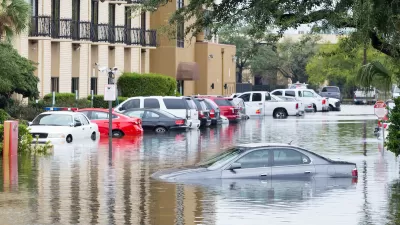It all depends on who you ask, argues David Alpert. Ratepayers have pushed for buried lines before; now, there's reason to doubt it would cost as much as the utility company once quoted them.
Three days after a storm took out power lines across the region, residents throughout D.C., Maryland, and Virginia are still stranded without electricity – and determined to make sure a little bad weather never leaves them in the dark again.
But ratepayers have raised the issue of buried power lines with the Potomac Electric Power Company (or Pepco, for short) before, when the D.C. Department of Transportation rebuilt a one-mile stretch of Brookland's 12th Street just three years ago. At the time, Pepco quoted the cost of burying power lines on 12th at $60 million. Yet when residents looked to other jurisdictions that were doing the same thing, they found costs estimated at "$500,000 to $3 million per mile," Alpert notes. "That means the estimates differ by a factor of 20 to 120."
"This reveals a credibility gap for Pepco. The utility
wasn't really interested in putting lines underground, so it seems it
threw out a very high estimate."
While moving those lines underground would have saved one neighborhood from the blackout, Pepco would have to bury its main trunk lines to protect the region at large – which, with a couple small exceptions, it has expressed little interest in doing.
"One thing is clear," Alpert charges: "unless the PSC starts pushing Pepco hard, wires
won't go underground. To the utility, there's no incentive to invest in
the cost of expensive infrastructure that's more reliable, or just
having more crews on hand to make repairs. As a for-profit company with
fixed rates, their only incentive is to keep costs low, and that means
skimping on reliability."
FULL STORY: What will it cost to bury power lines?

Alabama: Trump Terminates Settlements for Black Communities Harmed By Raw Sewage
Trump deemed the landmark civil rights agreement “illegal DEI and environmental justice policy.”

Planetizen Federal Action Tracker
A weekly monitor of how Trump’s orders and actions are impacting planners and planning in America.

The 120 Year Old Tiny Home Villages That Sheltered San Francisco’s Earthquake Refugees
More than a century ago, San Francisco mobilized to house thousands of residents displaced by the 1906 earthquake. Could their strategy offer a model for the present?

Ken Jennings Launches Transit Web Series
The Jeopardy champ wants you to ride public transit.

BLM To Rescind Public Lands Rule
The change will downgrade conservation, once again putting federal land at risk for mining and other extractive uses.

Indy Neighborhood Group Builds Temporary Multi-Use Path
Community members, aided in part by funding from the city, repurposed a vehicle lane to create a protected bike and pedestrian path for the summer season.
Urban Design for Planners 1: Software Tools
This six-course series explores essential urban design concepts using open source software and equips planners with the tools they need to participate fully in the urban design process.
Planning for Universal Design
Learn the tools for implementing Universal Design in planning regulations.
Clanton & Associates, Inc.
Jessamine County Fiscal Court
Institute for Housing and Urban Development Studies (IHS)
City of Grandview
Harvard GSD Executive Education
Toledo-Lucas County Plan Commissions
Salt Lake City
NYU Wagner Graduate School of Public Service





























